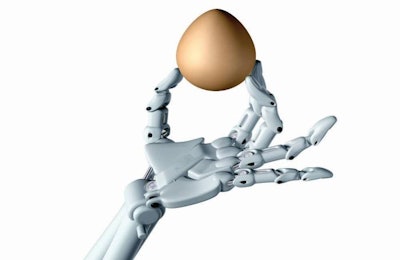
In Ovo, a biotechnology start-up specializing in the development of gender-testing technology in eggs, has raised several million euros in further funding from Evonik’s venture capital arm and co-investor VisVires New Protein Capital.
“For the industry, it’s an ethical challenge,” said Mark Redshaw, the investment director at Evonik. “We’re always looking at new opportunities and technologies to help our customers in one way or another, even if it’s not directly a product we sell.”
Evonik first invested in the chick sexing technology start-up in 2018.
The chick sexing problem
Approximately 6-7 billion male layer chicks are culled each year, a major animal welfare and economic concern for the layer industry. Animal welfare organizations have pressured the egg industry to find an alternative approach.
Egg producers around the world have pledged to adopt in ovo sex sorting technology as soon as it is available. In January 2020, the agriculture ministers of France and Germany jointly announced that the culling of male day-old chicks would be banned by the end of 2021.
How the technology works
The approach first samples a very small amount of fluid through a tiny hole in the egg. It then uses an analytical technique called mass spectrometry to test each egg for a novel biomarker.
“They put a lot of work into identifying a novel biomarker,” Redshaw added. “They’ve got something that is unique to them which from an investment perspective is great.”
The high-throughput screening machine can determine the gender of an egg by day nine after the start of incubation.
This technology recently received commercial approval and has been in use in a commercial hatchery since December 2020, where it has sexed more than 150,000 female chicks.
“We look forward to them growing and rolling out their technology with an increasing number of systems,” Redshaw concluded.
Like what you just read? Sign up now for free to receive the Poultry Future Newsletter.

















